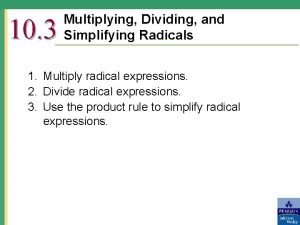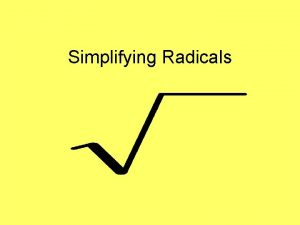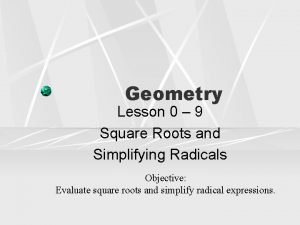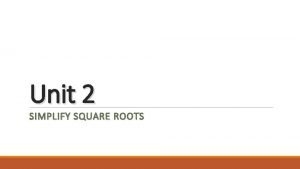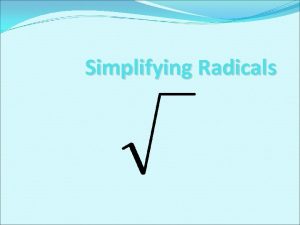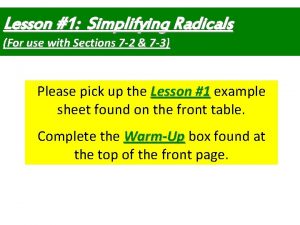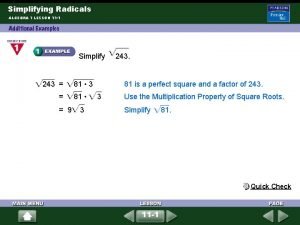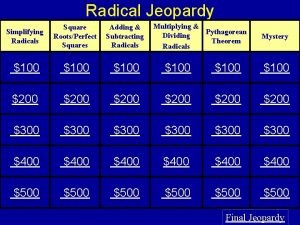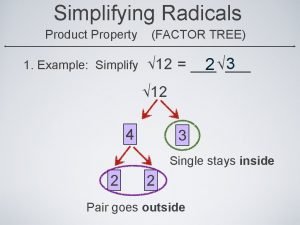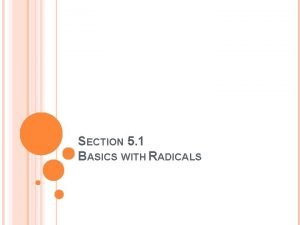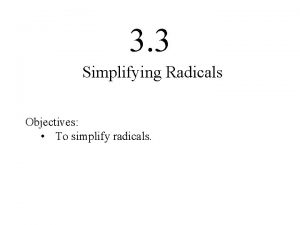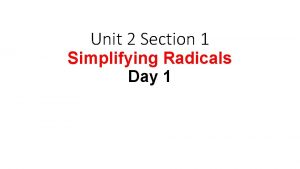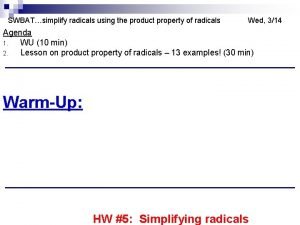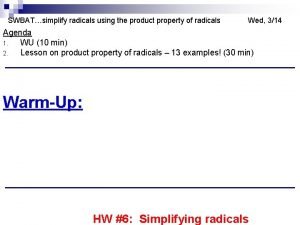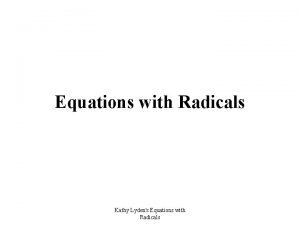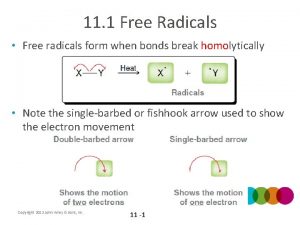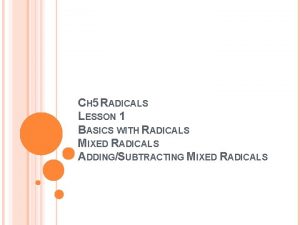Simplifying Radicals Section 5 3 n Radicals n













- Slides: 13

Simplifying Radicals Section 5. 3

n Radicals n Definition n Simplifying n Adding/Subtracting n Multiplying n Dividing n Rationalizing the denominator

Radicals - definitions The definition of is the number that when multiplied by itself 2 times is x.

Simplifying radicals Most numbers are not perfect squares, but may have a factor(s) that is (are) a perfect square(s). The perfect squares are: 1, 4, 9, 16, 25, 36, 49, 64, 81, 100, 121, 144, ….

Try these - simplify: If a radical has a perfect square factor, then we can pull it out from under the sign. Ex:


Adding or Subtracting Radicals To add or subtract square roots you must have like radicands (the number under the radical). Sometimes you must simplify first:

Try These

Multiplying Radicals You can multiply any square roots together. Multiply any whole numbers together and then multiply the numbers under the radical and reduce. Try these:

Dividing Radicals To divide square roots, divide any whole numbers and then divide the radicals one of two ways: 1) divide the numbers under the radical sign and then take the root, OR 2) take the root and then divide. Be sure to simplify. or

Try These

Rationalizing Radicals n It is good practice to eliminate radicals from the denominator of an expression. n For example: We need to eliminate n We do not want to change the value of the expression, so we need to multiply the fraction by 1. But “ 1” can be written in many ways… Since we will multiply by one where

Try These
 Simplifying radicals
Simplifying radicals Combine these radicals -6√100+√36
Combine these radicals -6√100+√36 Lesson 0-9 square roots and simplifying radicals answers
Lesson 0-9 square roots and simplifying radicals answers Unit 7-1 simplifying radicals answer key
Unit 7-1 simplifying radicals answer key Simplify square root of 8
Simplify square root of 8 Multiply radical
Multiply radical Lesson 1 simplifying radicals
Lesson 1 simplifying radicals Perfect square of 108
Perfect square of 108 Simplifying radical quiz
Simplifying radical quiz 11-2 simplifying radical expressions answers
11-2 simplifying radical expressions answers Simplifying radicals jeopardy
Simplifying radicals jeopardy Simplifying radicals using factor tree
Simplifying radicals using factor tree Rationalizing the denominator worksheet
Rationalizing the denominator worksheet What is an entire radical
What is an entire radical
